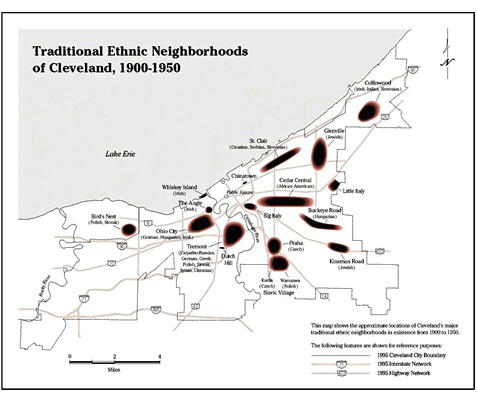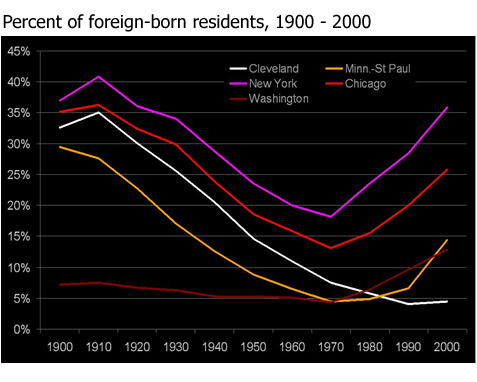|
Several trends emerge that give a clearer picture of the challenge before us, and may also suggest areas of greatest vulnerability (or opportunity), where connections with appropriate community assets could be helpful:
-
Public Involvement in the Arts: Nationally, attendance at live performances has seen an increase, but it has not grown as much as the market for recorded and broadcast performances has. A Rand Corporation report attributes the increase in population growth, not in the percentage of the population that attends live performances. Cleveland’s lack of population growth makes generating increased attendance for arts programs more difficult.
-
Competition: Americans are placing a premium on flexibility of their time and favor experiences that allow them to choose when and where. Younger generations, which are more technologically savvy, appear to be more comfortable with entertainment provided through the Internet and other emerging technologies and could be less inclined to attend live performances. The improved quality of electronically reproduced entertainment, the rising cost of attending live performances and an increased desire among Americans for home-based leisure activities are other factors that favor media-delivered entertainment. In addition, the fact that the arts are no longer an integral part of most students’ curriculum means that several generations of Americans and Clevelanders have now graduated with no background in the arts and no preparation to enjoy them.
-
The Future of Arts Organizations: The Rand Corporation’s research forecasts that the performing arts world will be divided into big organizations and smaller-scale operations, and those that cater to a broad public versus niche markets. Big organizations will rely increasingly on mass advertising and celebrity to attract large audiences, while small organizations will have to become more dynamic and more diverse, focusing on low-budget, low-tech productions and relying heavily on volunteer labor. Many will cater to local and specialized markets, particularly ethno-cultural communities. It is the mid-size organizations, however, that will face the biggest challenge: As they continue to be squeezed financially, they will need to become either larger and more prestigious or smaller and more community-oriented. As many of these organizations are forced to scale down their budgets and aspirations, talented newcomers will need to look elsewhere for opportunities to gain experience in the performing arts, with universities playing a larger role as developers of young talent.
-
Sources of Arts Funding: Earned income (i.e., box office) constitutes 66% of total revenue for Northeast Ohio arts and cultural organizations—notably better than the national average, which a Rand Research brief on the Arts sets at around 50%. But local organizations fall short of national standards with respect to cash reserves, which are equal here to only 14% of the operating budget compared to the benchmark figure of 25%; and 70% of the area’s arts and cultural organizations do not meet national standards for endowments. Government funding for the arts typically has accounted for a small percentage of arts funding, but since the early 1990s the mix has changed: While federal funding has declined by almost 50%, state and local appropriations have increased. State and local grants, however, tend to focus more on the social and economic benefits of the arts. Nationally, arts organizations have become increasingly dependent on private contributions, which now comprise approximately one-third of non-profit revenues. Cleveland’s performing arts institutions have enjoyed strong support from individuals, corporations and foundations.
-
The Role of Heritage: But a city’s culture comprises more than its institutions. It is found in the architecture, signage, cuisine, music, traditions, taste in clothing and other accoutrements, the ways of talking and interacting, of worship and recreation, mourning and celebration, that define that city’s neighborhoods. The cultural character of Cleveland is the legacy of the many ethnic groups that settled here, founded and worked the city’s businesses, indeed, created its institutions, and called Cleveland home. The rich mélange of immigrant populations that settled in Cleveland arrived in waves and often settled in enclaves of people from the same home country. In the late 1800s, most foreign-born residents were of German or Irish descent. As the economy boomed and manufacturing jobs multiplied, Cleveland became a magnet for others seeking work and a chance for a better life. Around the turn of the 20 th century, Eastern Europeans such as Czechs and Poles converged in large numbers. Austrians, Hungarians and Russians arrived just before World War I; and as the economy geared up for war and the troop ships took on men, African-Americans from the South now streamed north in even larger numbers to find work.

-
New Immigrants—the Missing Ingredient: A crucial element has been missing from Cleveland’s economic recovery over the last two decades: an infusion of fresh energy, valuable skills and new ideas of the sort that large numbers of immigrants brought to the city during the second half of the 19th century and first half of the 20th. Significant numbers of new immigrants are still arriving in America—often bringing needed technological skills and other training, or at least an eagerness to work and learn—but, as the next graphic shows, they are no longer being drawn to Cleveland in any significant numbers. By the mid-Seventies the long negative trend had reversed for cities like New York, Chicago, Washington, D.C., and St, Paul-Minneapolis, where the influx of new blood has continued to rise steadily.
The same graph also makes it painfully clear that Cleveland is not yet participating from this trend. Though the percentage of the city’s population that is foreign-born is up slightly from what it was in 1990 (4.1%), by 2000 it had barely reached 4.5% compared with 11.1% nationwide. Chicago, now with more than 25% of its citizenry foreign-born, and New York with more than 35% are fast approaching the levels they boasted at the time of the First World War, when Cleveland’s immigrant population reached 35%
 . .
Of course these figures do not tell the whole story. For example, while the percentage of foreign-born in Cleveland was 4.5% in 2000, the rate for Cuyahoga County overall was 6.4%. In earlier times, most immigrants settled in the center city and then gradually moved out toward the suburbs as their families became established. Many recent immigrants have bypassed the central city altogether. In 2000, foreign-born made up 7.3% of the suburban population, with some of the highest concentrations found in Hillcrest suburbs such as Mayfield Heights (18.1%), Richmond Heights (17.4%) and Beachwood (15.5%). To the south, Parma, Parma Heights and Seven Hills also had relatively high concentrations.
Other patterns also emerge: Approximately 58% of the foreign-born suburbanites in 2000 had come from Europe (as compared with 41% in the city of Cleveland), and just 5.7% from Latin America, versus 22% in Cleveland. Asian immigrants made up about the same share in both the city of Cleveland (29%) and the suburbs.
-
Designated Heritage Districts: The City of Cleveland protects the integrity of historic and cultural structures through the work of the Landmarks Commission. The commission reviews proposed changes to individual structures of note as well as designation of distinctive districts throughout the city. Efforts have also been made to preserve, and promote a greater awareness of—and access to—other assets that constitute a part of Cleveland’s cultural heritage. In 1998 the Cuyahoga River was named as one of 14 American Heritage Rivers.
Two years earlier, in 1996, the federal government designated the 88-mile Ohio and Erie Canal National Heritage Corridor, which, centered on the Cuyahoga Valley with extensions out to University Circle, includes a significant section of the city. A management plan for the corridor was developed in 2000 to identify ways to protect and enhance resources that tell the story of the impact of the Ohio & Erie Canal and the subsequent industrial heritage of the area. The plan proposes telling these stories through journeys via a variety of transportation modes. In 1996, major driving routes along the canal corridor were designated as the Ohio & Erie Canal Scenic Byway. Three such routes run along the Cuyahoga Valley within the city: 1) West 25th Street to Broadview to Schaaf Road; 2) Independence Road; and 3) Warner Road to Broadway. The proposed Towpath Trail and Cuyahoga Valley Scenic Railway extensions to downtown Cleveland are also part of the City’s plan to expand the modes of transportation (and access to amenities) available to Clevelanders.
-
Public Art: Public art, whether freestanding pieces or elements incorporated into the design of buildings or other functional structures, contributes to the shaping of memorable places, often by telling the stories of those places. Public art, moreover, can be created on a variety of scales. Downtown Cleveland’s 1903 Group Plan, comprising the 500-foot-wide outdoor mall and seven public buildings, is an example of civic design on a grand scale that created a whole district that was both distinctive in character and physically inspiring. (The earliest and most complete civic center plan for a major city outside of Washington, D.C., it was recognition across the country and praise in national journals.) Public art may also be incorporated into individual buildings, functional elements of buildings or outdoor spaces, or self-contained works.
The City of Cleveland recently showed its support for public art by enacting legislation requiring that 1.5% of the budget for every City project of over $350,000 go to public art. Streetscape projects are included in this requirement. As part of the Public Art Program, an advisory committee of design professionals and community representatives has been established to assist in soliciting designs and obtaining community input .
|

